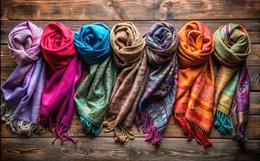Sizing inconsistencies contribute to significant garment waste and CO₂ emissions, especially in e-commerce due to high return rates. Vanity sizing and lack of standardisation confuse consumers and...
Maximising the use of garments is key to sustainable fashion. The number of times a garment can be worn depends on its type, material, and care. The '30 Wears Rule' encourages mindful purchasing,...
Fashion sourcing is evolving with a focus on sustainability, digitisation, and ethical practices. AI, blockchain, and data analytics enhance supply chain agility and transparency. Geopolitical...
Indian embroidery is enduring in the age of AI and 3D fashion by preserving cultural depth and human touch. Each handmade piece is carrying emotion, history, and uniqueness that machines are failing ...
Pashmina shawls, made from the soft wool of the Changthangi goat, are a luxury product steeped in history and tradition. The intricate weaving techniques, like Kani and Sozni, and the use of natural ...
The digital saree movement in the metaverse is merging India’s rich textile heritage with cutting-edge technology. By creating virtual sarees, designers preserve cultural traditions while making...
Fashion's carbon debt is a result of decades of overproduction and fossil-fuel dependence. Decarbonising the industry could cost $1 trillion, requiring substantial investment. Key steps include...
Regenerative fibres like hemp, flax, and nettle are transforming the fashion industry by promoting sustainable and climate-resilient textile production. These fibres restore ecosystems, conserve...
Chamba embroidery, renowned for its double-sided do-rukha stitch, creates flawless designs on both sides of the fabric. This art form, rooted in 17th-century Himachal Pradesh, was once royal...
Luxury fashion brands are increasingly embracing sustainability, using materials like organic cotton, hemp, and mycelium leather. Technologies such as AI, 3D designs, and blockchain is helping...
Fanny Vermandel
Arun Sirdeshmukh
Anurag Batra
Pradip Mehta
Rahul Mehta
Aseem Prakash
Abhay Gupta
Gabi Seligsohn
Rahul Mehta
Bill D’Arienzo
-s_Small.jpg)
-s_Small.jpg)
-s_Small.jpg)
-s_Small.jpg)

-s_Small.jpg)
-s_Small.jpg)
-s_Small.jpg)






_8.JPG)





